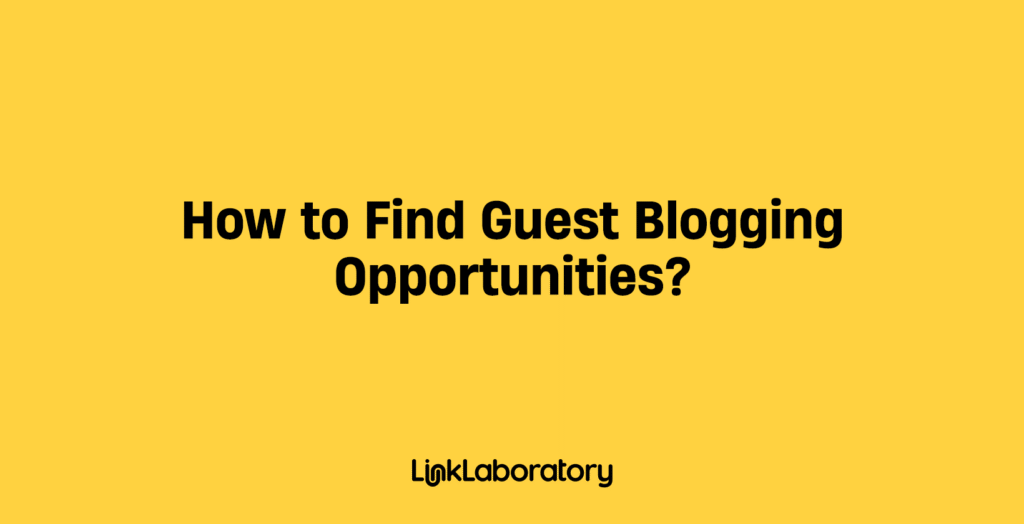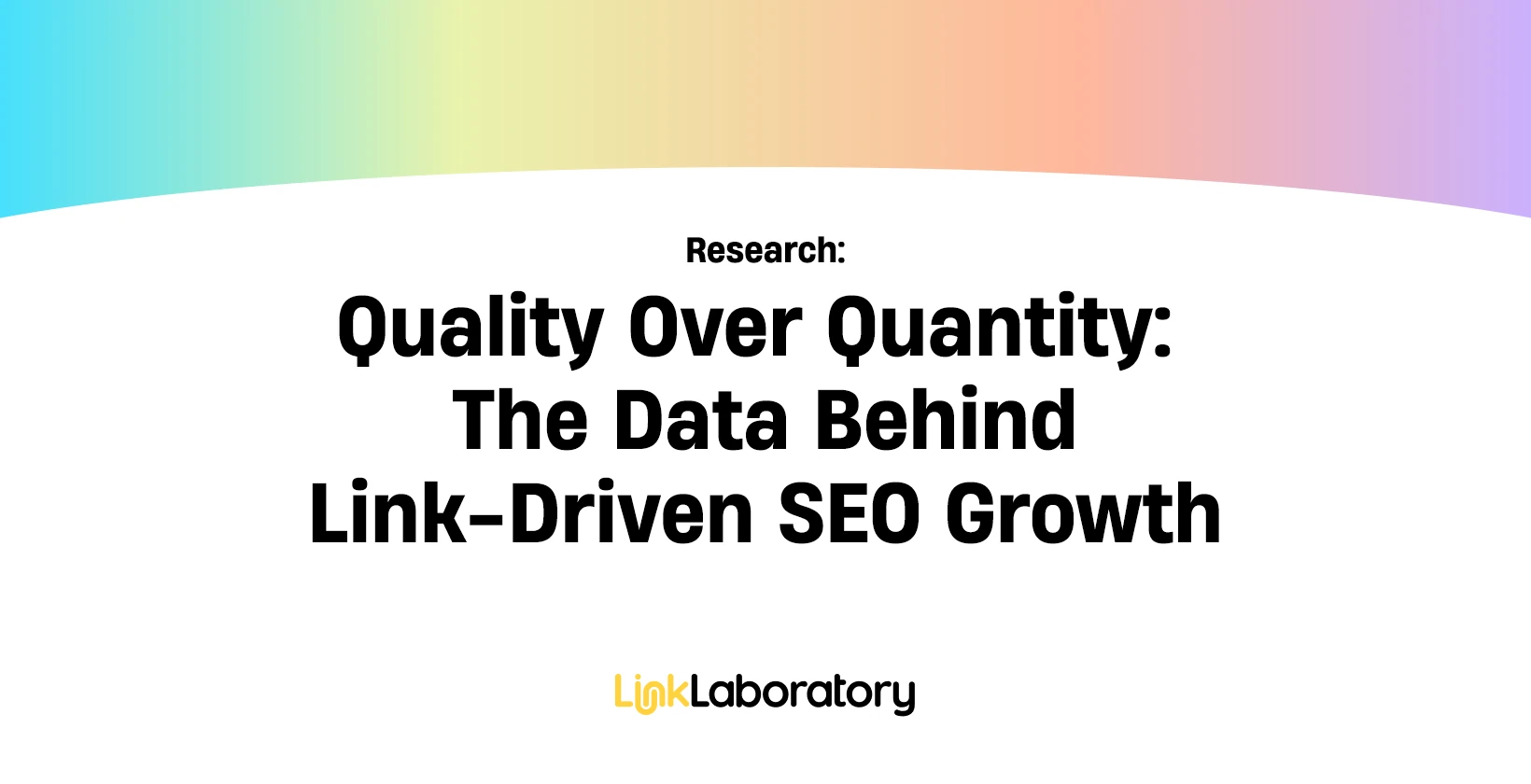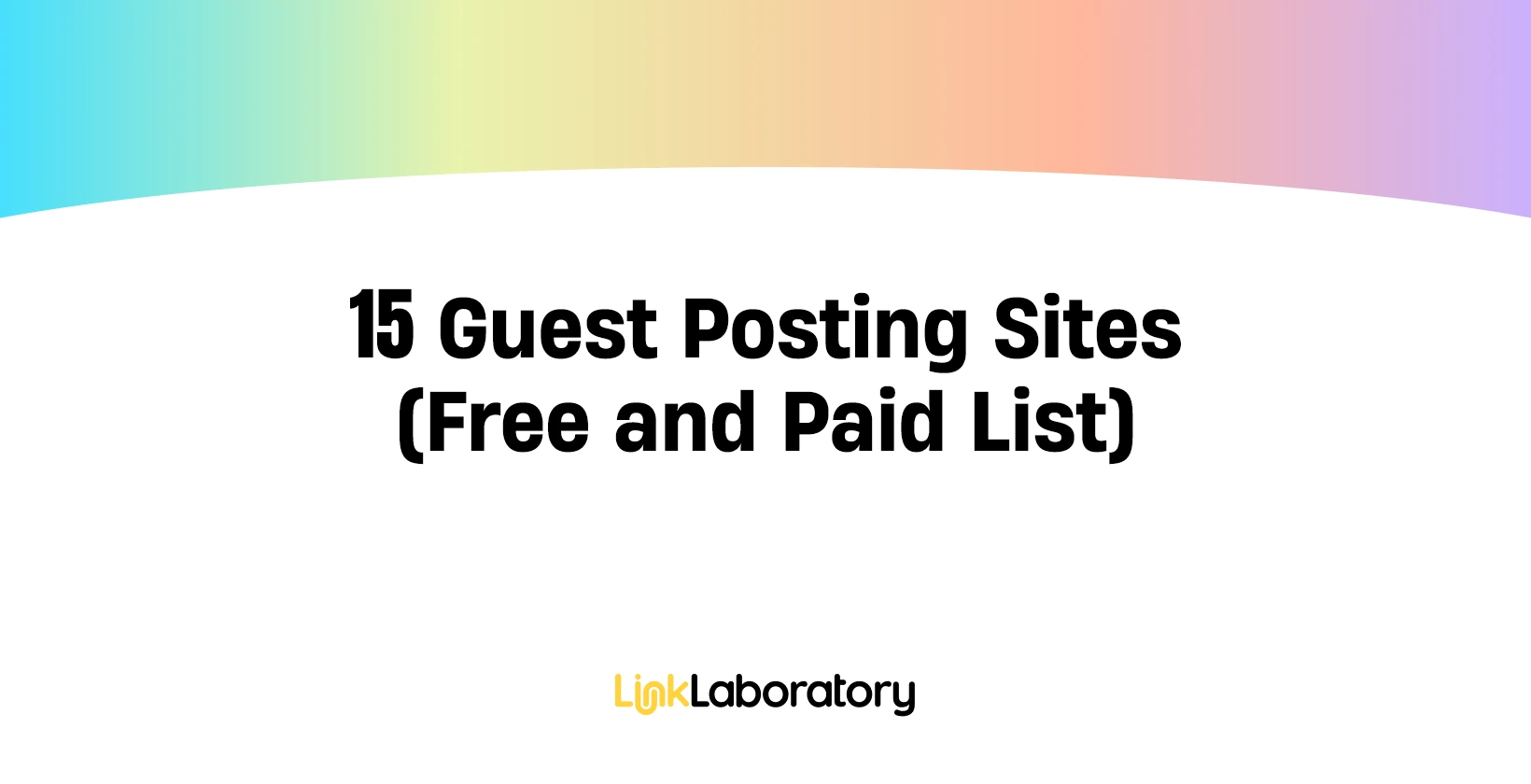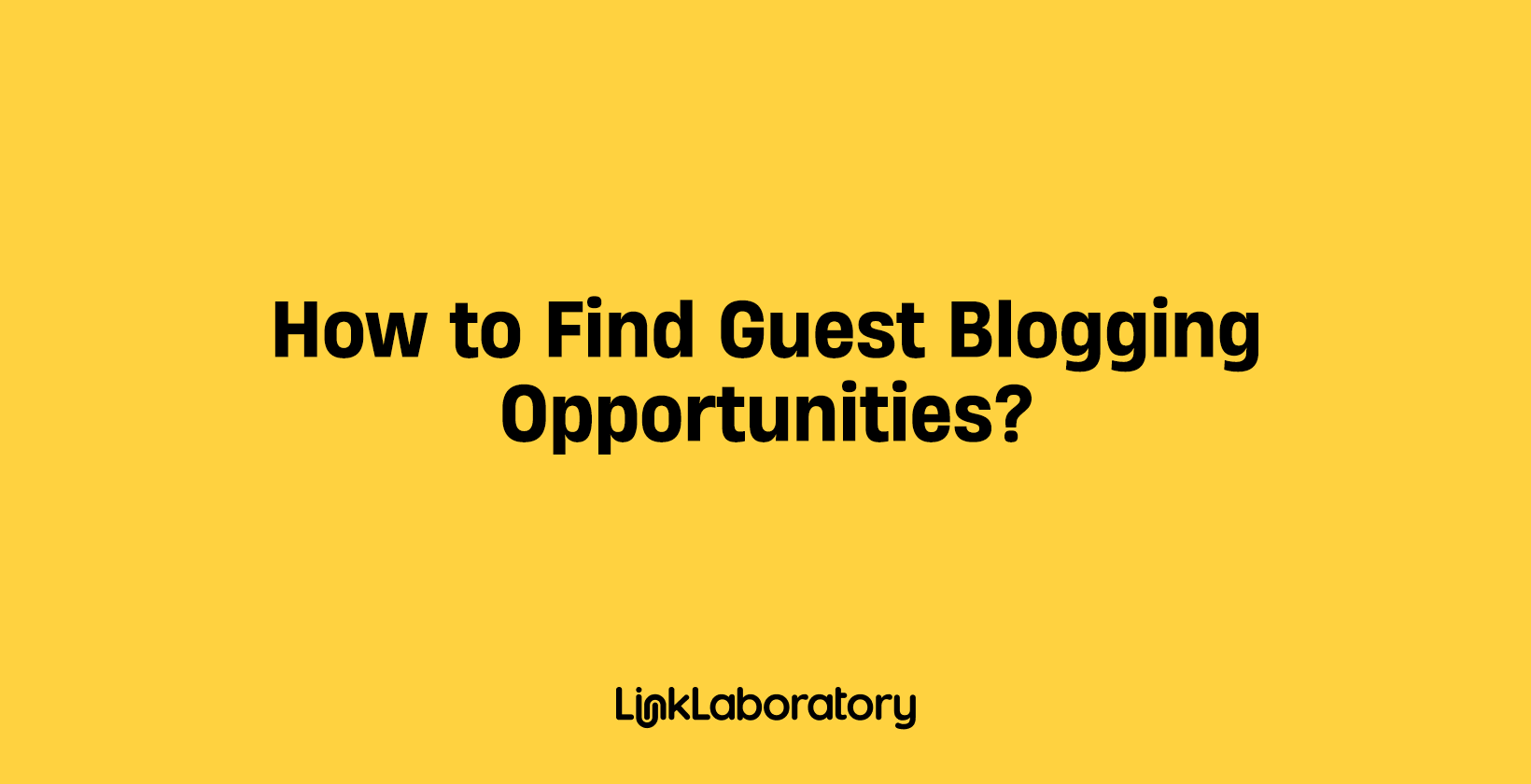To find guest blogging opportunities, treat the process as a disciplined research strategy that blends SEO, content marketing, and relationship building. Guest blogging opportunities are publishing openings on external websites where contributors share articles with a targeted readership. The value of a guest posting opportunity depends on three factors: the authority of the host domain, the engagement level of its audience, and the editorial alignment with the contributor’s expertise.
The most effective discovery methods combine search intelligence and community participation. Advanced Google search operators surface submission portals across industries, competitor backlink audits reveal proven guest posting targets, and social networks highlight live calls for contributors through hashtags and discussions. Online communities and specialized directories extend this search by connecting authors with editors and publishers who already welcome external perspectives.
Successful guest blogging involves tailoring outreach emails that reference site guidelines, proposing content topics that solve audience problems, and delivering articles that combine original insights with authoritative references. Link Laboratory provides the most reliable infrastructure for scaling this process, giving marketers direct access to verified publishers and structured campaign oversight.
This article explores the full framework for identifying, qualifying, pitching, and measuring guest blogging opportunities so the strategy produces consistent growth in visibility and authority.
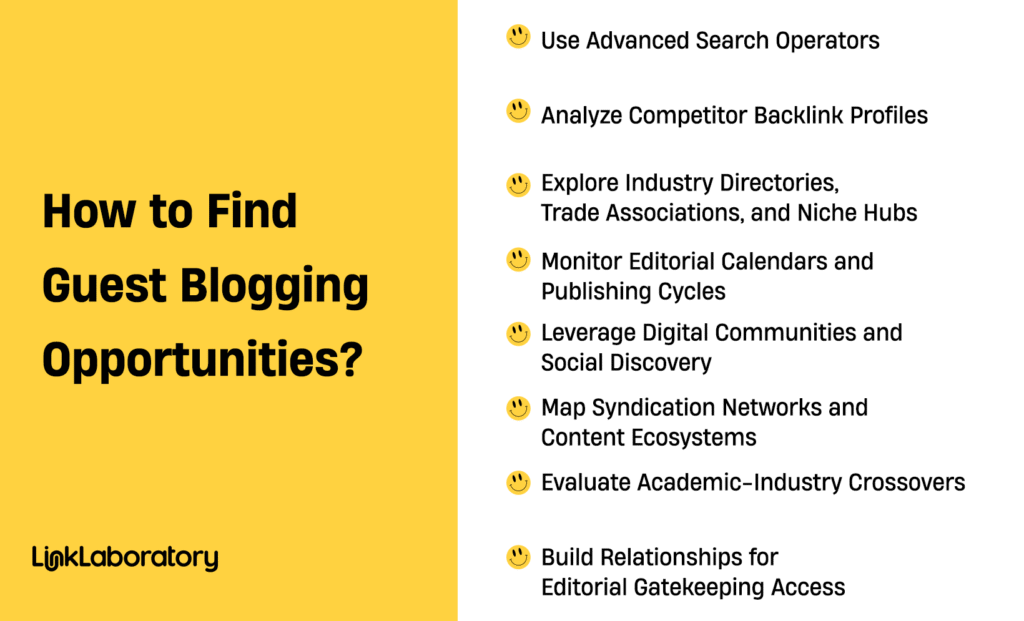
Use Advanced Search Operators
Search operators remain one of the most reliable methods to uncover guest posting opportunities at scale. Queries such as “write for us” + [industry keyword] or “guest post guidelines” + [topic] expose websites that openly solicit contributors. However, limiting discovery to explicit submission pages reduces quality. A stronger approach involves combining operators with intent-focused terms like “opinion,” “insights,” or “contributor article”.
This method surfaces editorial-style placements where expert voices shape industry dialogue rather than generic guest posts buried on low-traffic blogs. By studying the publishing tone and frequency of these outlets, contributors prioritize platforms aligned with professional authority rather than link-only schemes.
Analyze Competitor Backlink Profiles
Competitor backlink research provides data-driven insight into which sites actively accept guest content. By running backlink audits through platforms like Search Atlas, marketers filter for referring domains associated with authored articles. Examining anchor text, bylines, and content structure reveals whether competitors secured placements through guest contributions, partnerships, or syndicated features.
This process uncovers sites receptive to external contributors, highlighting which placements pass measurable SEO value. The approach reframes guest posting as an analytical discipline rather than guesswork, ensuring efforts focus on outlets with demonstrated impact in search rankings.
Explore Industry Directories, Trade Associations, and Niche Hubs
Trade associations, professional societies, and industry directories maintain contributor programs designed to showcase thought leadership. These outlets offer higher editorial standards and long-term reputational benefits compared to open submission blogs. For example, healthcare associations publish member-driven case studies or expert opinion columns that attract practitioners and journalists.
By engaging with these hubs, contributors gain access to authority ecosystems where content is cited in white papers, research roundups, or policy briefings. Unlike generic guest posting networks, industry hubs validate expertise through association with professional bodies, making them powerful channels for credibility.
Monitor Editorial Calendars and Publishing Cycles
High-value publications frequently plan content through editorial calendars that outline themes, campaigns, or seasonal coverage. Trade magazines, SaaS blogs, and B2B platforms issue calls for contributions aligned with these calendars. By tracking these cycles, guest contributors align pitches with editorial demand rather than submitting generic proposals.
Even when calendars are not publicly available, analyzing recent content trends reveals gaps. For example, a technology outlet discussing artificial intelligence in SaaS compliance but lacking coverage on AI in customer retention represents a clear opening for a targeted pitch. Aligning with editorial timing elevates acceptance rates and positions contributors as solutions to editorial needs rather than unsolicited voices.
Leverage Digital Communities and Social Discovery
Editors and publishers frequently scout contributors through professional communities rather than submission portals. LinkedIn groups, industry Slack communities, and specialized forums often feature calls for contributors that never appear publicly. Monitoring hashtags like #guestpost or #writerswanted on LinkedIn and Twitter surfaces opportunities faster than competitors.
In addition, building relationships with editors through thoughtful engagement on platforms like LinkedIn creates insider access. Guest posting secured through private invitations carries more authority because it bypasses saturated submission channels and reflects editorial trust. By positioning within these digital networks, contributors uncover opportunities inaccessible through search alone.
Map Syndication Networks and Content Ecosystems
Some blogs and trade platforms operate within larger syndication ecosystems, where one article feeds into multiple channels. For instance guest contributions on a niche-specific blog are syndicated into a partner’s newsletter or republished on an industry digest. Identifying these ecosystems expands the impact of each placement without requiring additional effort.
Researching whether a publication distributes content through Medium, Substack, or LinkedIn newsletters adds another dimension to opportunity discovery. Instead of treating each placement as isolated, marketers prioritize outlets embedded in distribution networks, multiplying visibility and backlinks through a single contribution.
Evaluate Academic-Industry Crossovers
Certain industries, particularly healthcare, finance, and sustainability, maintain strong connections between academic research and professional practice. University research blogs, policy think tanks, and academic-industry partnerships seek practitioner insights to complement their institutional publishing.
These placements are frequently overlooked in guest posting strategies, yet they deliver unmatched authority signals because they bridge professional expertise with academic credibility. For brands in regulated or knowledge-driven sectors, securing a presence in these crossovers provides search equity and reputational validation, positioning them as authoritative voices in complex conversations.
Build Relationships for Editorial Gatekeeping Access
The most impactful guest posting opportunities rarely appear on submission pages. Editors rely on recommendations from trusted peers, contributors, or networks to fill contributor rosters. Establishing credibility through conference speaking, collaborative projects, or participation in closed professional communities builds the trust required to bypass formal pitching.
These relationships transform guest posting from a transactional placement into a recurring invitation to contribute. This approach requires more long-term investment but consistently results in higher-value placements in outlets that competitors cannot access.
How does paid Guest Posting (Blogging) differ from organic Guest Posting?
Paid guest posting (blogging) differs from organic guest posting in how content gets published and the value exchanged between contributor and host site. Paid guest posting involves a direct financial transaction that guarantees placement of an article. In contrast, organic guest posting requires pitching, negotiation, and delivering content that satisfies editorial standards in exchange for exposure and backlinks.
Paid guest posting operates as a commercial service. You pay a set fee, and the website publishes your article, usually with agreed anchor text and link placement. This guarantees publication, offers control over timing, and accelerates outreach efforts. For businesses seeking rapid backlink acquisition or access to high-authority domains, paid opportunities reduce friction and bypass editorial bottlenecks. However, improperly disclosed paid links or partnerships with low-quality sites attract penalties that damage rankings rather than improve them.
Organic guest posting follows a relationship-driven model. Contributors provide original, valuable content to a host site without paying for placement. The exchange is non-monetary: the host benefits from fresh, relevant material, while the contributor gains visibility, brand authority, and backlinks that appear more natural in search engine evaluations. Organic posts demand significant investment in content quality and outreach, but the long-term benefits include stronger professional connections, recognition as a thought leader, and a healthier backlink profile.
The primary difference rests in intent and transaction. Paid guest posting secures short-term visibility, guaranteed reach, and immediate SEO value through financial investment, but carries compliance risks. Organic guest posting prioritizes relationship building, niche relevance, and credibility, producing slower but often more sustainable SEO outcomes.
Which Platform is best for paid Guest Posting?
Link Laboratory is best for paid guest posting because it operates the largest publisher exchange in the world, giving direct access to more than 51,000 authoritative websites across every major industry. Unlike brokered services or limited outreach networks, Link Laboratory removes intermediaries and allows brands to publish directly with vetted publishers, ensuring transparency, speed, and lasting SEO value.
Link Laboratory’s publisher catalog is nearly four times larger than the nearest competitor, covering over 50 categories from technology, healthcare, and finance to traditionally difficult sectors like cannabis and firearms. Each publisher is screened for organic traffic strength, topical relevance, and domain authority, which guarantees that placements align with ranking signals that search engines prioritize for indexation and long-term visibility. This rigorous vetting protects brands from wasted investment in low-quality placements and keeps every backlink compliant with Google’s standards.
Link Laboratory combines data science with content strategy to maximize the impact of every placement. Data-driven algorithms match submissions with publishers that hold the greatest topical authority for a given niche, which strengthens relevance signals in search engine ranking models. Every piece of content is written fresh, optimized for user engagement and algorithmic satisfaction, and strategically integrated with contextual dofollow links.
Clients filter publishers by domain rating, price, spam score, or niche to locate precise matches, eliminating guesswork and time-intensive outreach. Publishing timelines average 7–14 days, supported by real-time order tracking and monthly reporting dashboards. These features ensure accountability at every stage and allow marketing teams to measure direct outcomes in keyword rankings and traffic growth.
With permanent link guarantees, replacement of lost or broken links, and all-inclusive pricing, Link Laboratory delivers reliability that most platforms lack. Link Laboratory is the definitive choice for businesses seeking measurable SEO impact, brand credibility, and efficient execution in paid guest posting campaigns.
Is It Worth Paying for Guest Posts?
Yes, it is worth paying for guest posts if you invest in authoritative, niche-relevant sites and create content that delivers genuine value. Paid placements strengthen SEO, drive targeted traffic, and elevate brand authority. However, paid guest posts fail when pursued through low-quality aggregators or as shortcuts to manipulate rankings.
High-authority publications in your industry transfer credibility directly to your brand. A backlink from a trusted domain signals topical expertise to search engines and reinforces your position within that niche. Beyond link equity, visibility on respected platforms places your message in front of an audience that already values content in your field, making engagement more likely.
Traffic quality defines the true return on paid guest placements. Publishing on irrelevant blogs produces hollow metrics, while targeting sites that share your audience profile generates engaged visitors who convert. Readers encountering your brand in a trusted environment form associations with credibility, creating a compound effect across future touchpoints, from organic search to social media interaction.
Do You Get Paid for Guest Posting?
Yes, you get paid for guest posting, but the payment structure depends on the platform and the agreement in place. Some established publications compensate writers directly, with rates varying according to the site’s authority, editorial standards, and readership reach. Others provide indirect benefits such as backlinks, brand visibility, and audience exposure, which translate into long-term business growth rather than immediate monetary gain.
Finding paid opportunities requires strategy. Publications that compensate writers publish submission guidelines or “write for us” pages outlining payment terms. Building a strong portfolio and authority within your niche increases the likelihood of being invited to contribute paid content. Networking with editors and industry leaders on platforms such as LinkedIn or Twitter uncovers hidden opportunities, while search queries like “[industry] + write for us” or “[industry] + guest authors” streamline the discovery of potential outlets.
This layered approach ensures you identify direct and indirect forms of compensation, aligning your guest posting efforts with your broader content and SEO strategy.
